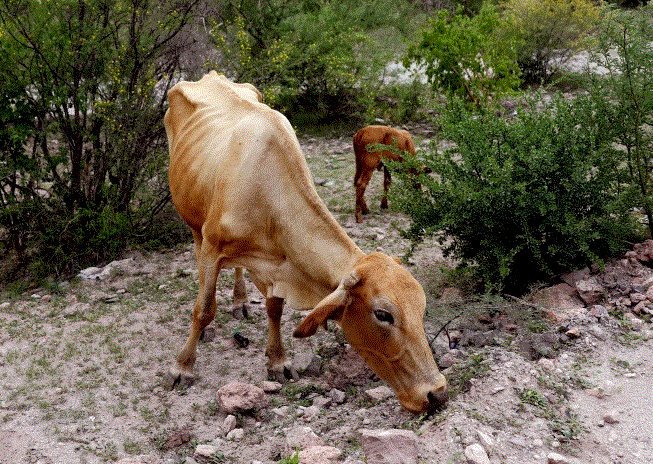CAJEME, Mexico — In the parched hills of southern Sonora, Marco Antonio Gutierrez paced around a clearing, counting the dead.
There were seven rotting carcasses — jutting ribs and shriveled hides — and two sun-bleached skulls. Nine cows, felled by heat and hunger.
“There’s nothing for them to eat,” said Gutierrez, a wide-brimmed hat shading his downcast eyes. “There used to be big ranches here. Now it’s pure sorrow.”
Two years of extreme drought have turned large stretches of northern Mexico into a boneyard. Between starvation and ranchers forced to prematurely sell or slaughter their livestock, officials say the number of cattle in Sonora has dropped from 1.1 million to about 635,000.
It’s an unimaginable loss for a state that is world-famous for its high-quality cows, and where beef is not just a central part of the diet and economy but also a tradition that binds families together.
This is a place, after all, with a bull on its state flag, and where families gather every Sunday around their charcoal grills. Red meat is considered a birthright: It’s not uncommon for folks here to eat beef three times a day.
Gutierrez, 55, and pretty much everyone he knows was born ranching. By the age of 10, he and his friends had all learned from their fathers how to lasso, brand and even pull a calf from the womb.
Gutierrez doesn’t use the phrase “climate change” to describe what’s happening, but he laments that every year seems drier and hotter than the last. In recent months, he has watched helplessly as 70 of his 100 cows have starved to death.
Now, as they desperately watch the skies for rain, they wonder if there’s any future in it.
Los Angeles Times













